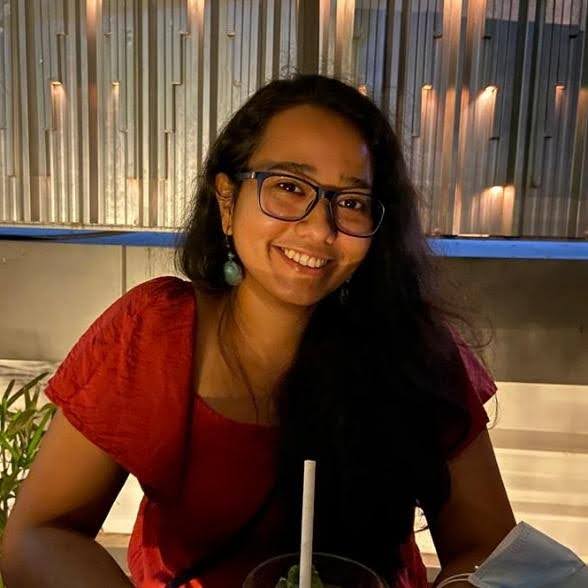Battling persistence in Tuberculosis: A tale of balanced regulation
Work done in the lab of Prof. Amit Singh at the Indian Institute of Science (IISc), Bangalore; Centre for Infectious Disease Research (CIDR), Microbiology and Cell Biology Department (MCBL)
Mayashree Das is a Ph.D. student working under Prof. Amit Singh in the Centre of Infectious Disease Research (CIDR), Microbiology and Cell Biology Department at the Indian Institute of Science (IISc), Bangalore. Mayashree did her Integrated Masters (B.Sc. + M.Sc.) in Bioscience and Bioinformatics from Tezpur Central University, Assam. She has recently defended her doctoral work on understanding the role of Fe-S biogenesis pathways in Mycobacterium tuberculosis physiology and pathogenesis.
Author Interview
How would you explain your research outcomes to the non-scientific community?
Mycobacterium tuberculosis (Mtb) is an important human pathogen that causes tuberculosis (TB) disease. Despite the administration of multiple drugs that are effective in vitro, TB treatment is rigorous with prolonged drug dosage and is confounded by the emergence of drug resistance. Moreover, Mtb is persistent inside ~30% of the world’s population. For successful persistence, Mtb relies on mechanisms that protect it from host immune pressures, such as antimicrobial stresses, including reactive oxygen species (ROS), reactive nitrogen species (RNS), and iron limitation- a form of nutritional immunity.
Iron-sulfur (Fe-S) clusters are a highly conserved prosthetic group of proteins that carry out essential functions of metabolism, respiration, and DNA repair. In Mtb, regulatory proteins also utilize Fe-S clusters that help bacterial persistence inside the phagocytic cells and hosts. However, Fe-S clusters are sensitive targets for ROS and RNS inflicted by immune cells, and iron starvation impacts the biogenesis and repair of Fe-S clusters. The fact that Mtb persists inside the phagocytic cells harboring harsh conditions indicates the efficient Fe-S cluster biogenesis and repair mechanisms in place. The current study showed that a single protein cysteine desulfurase (IscS) that releases sulfur from the amino acid cysteine also makes Fe-S clusters of Mtb. Why Mtb needed two systems to make and repair Fe-S clusters was unclear. So, we could delineate that the Fe-S cluster biogenesis activity of IscS allows Mtb to regulate the expression of the multiprotein Suf system. This calibrated expression of IscS and Suf systems is likely energy efficient, giving Mtb an edge in survival inside the host. This prevents hypervirulence of Mtb so that the pathogen persists inside the host without overwhelmingly accelerating bacterial growth and killing the host cells.

“Drugs against IscS could be beneficial for the most sensitive immune-compromised TB patients (e.g., HIV-TB coinfected individuals).”
How do these findings contribute to your research area?
We identified one reason why Mtb chronically persists in humans. Most TB patients recover from the infection without eradicating the bug from the system, leading to high relapse rates. We believe the coordinated expression of Suf and IscS systems is essential for the pathogen’s long-term persistence in the human host. Therefore, targeting both systems could be therapeutically beneficial in eradicating Mtb. Thus making them probable drug targets. Moreover, our study also suggests that without the nitric oxide signal in the host, the Suf system remains uninduced, coercing Mtb to use IscS for Fe-S biogenesis. Therefore, drugs against IscS could be beneficial for the most sensitive immune-compromised TB patients (e.g., HIV-TB coinfected individuals).
What was the exciting moment during your research?
If I recall, the most exciting moment during my research came disguised as surprising and challenging. It was the observation that we made that was the least expected and had the potential to pivot the whole direction of our story. The Mtb mutant strain I was working on was attenuated under in vitro growth conditions, which made us hypothesize that infection would be quickly cleared out of the system during a mice infection model. But, to our ultimate surprise, the IscS mutant strain became hypervirulent once inside mice post-infection. It was followed by the tedious journey of understanding the cause of this observation. This reminds me of the phrase, ‘When life gives you lemons, make a lemonade out of it.’
What do you hope to do next?
Even in the presence of drugs to treat Tuberculosis, TB remains the top pathogenic killer. The ability of Mtb to persist inside its human host and concomitantly evolve with the host is the biggest challenge in clearing TB disease from the population. Moreover, with the emergence of drug-resistant Mtb isolates, the treatment and eradication are impacted. This forces us to understand this enigmatic pathogen to be able to help cure TB. Hence, I would like to further work on Mtb and TB disease to be able to solve at least a piece of the puzzle.
Where do you seek scientific inspiration from?
Observing nature is the best way for me to seek scientific inspiration. Endless things happen every passing moment, and the curious observation of them triggering the questions ‘why’ and ‘how’ they occur is exciting. Other significant sources of inspiration are my Ph.D. mentor, Prof. Amit Singh, and my colleagues, who inspire me to keep working forward and not give up on the process. Prof. Amit urges us all to read more and more, keeping our minds open to ask the right questions to help us grow our understanding.
How do you intend to help Indian Science improve?
India is among the top nations whose population is largely affected by tuberculosis in different areas like socio-economic impact and public health. Thus, it is necessary to have the workforce to understand this pathogen and the disease, and create effective and cost-friendly drug regimens to treat and eradicate TB. As a researcher in this field, I aim to contribute to Indian science through active research and knowledge sharing, focusing on areas like drug resistance or vaccine development.
Reference: Mayashree Das et al., Cysteine desulfurase (IscS)–mediated fine-tuning of bioenergetics and SUF expression prevents Mycobacterium tuberculosis hypervirulence.Sci. Adv.9, eadh2858 (2023). DOI:10.1126/sciadv.adh2858. https://www.science.org/doi/10.1126/sciadv.adh2858
Biopatrika: Bringing Science to Society
© Biopatrika 2024 All Rights Reserved.
